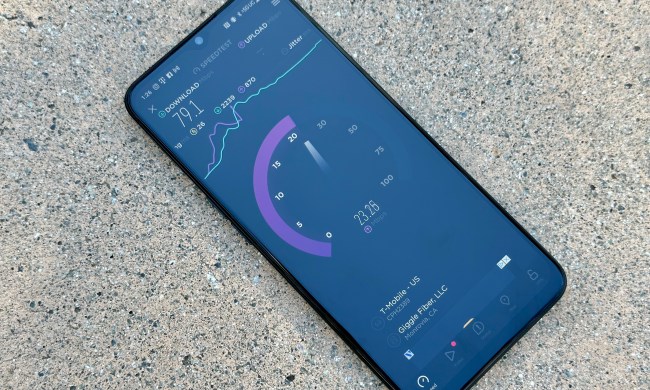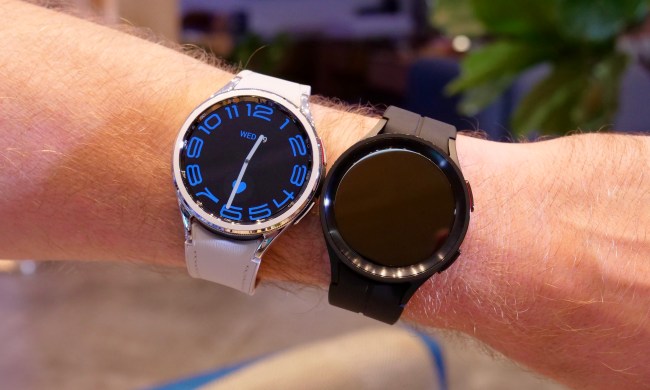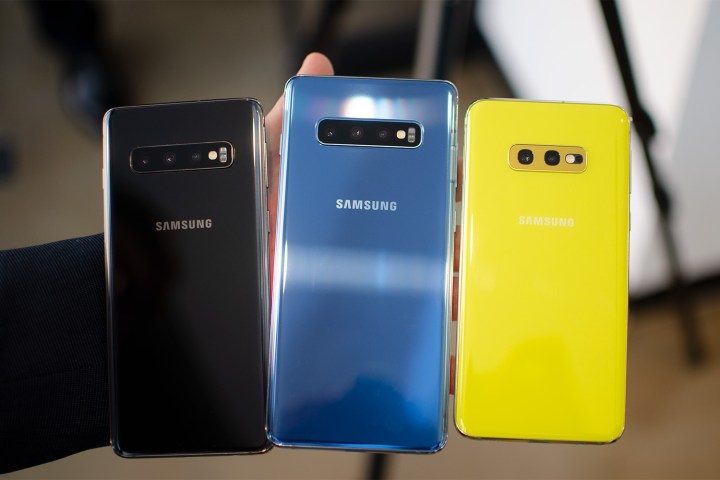
Samsung is celebrating a decade since the launch of the original Galaxy S phone with an impressive lineup that includes four new devices. This serious overhaul of the Galaxy S series, the first in a few years, includes stunning new Dynamic AMOLED displays, impressive camera suites, and lots more.
With four new phones to choose from, the question is: Which Samsung Galaxy is right for you? Do you opt for the S10, go large with the S10 Plus, save yourself some money with the S10e, or wait a few months for the next generation of mobile connectivity in the Galaxy S10 5G? We compare them all here to show precisely how they differ.
Specs
| Samsung Galaxy S10 | Samsung Galaxy S10 Plus | Samsung Galaxy S10e | Samsung Galaxy S10 5G | |
| Size | 149.9 × 70.4 × 7.8 mm (5.90 × 2.77 × 0.30 inches) | 157.6 × 74.1 × 7.8 mm (6.20 × 2.91 × 0.30 inches) | 142.2 × 69.9 × 7.9 mm (5.59 × 2.75 × 0.31 inches) | 162.6 × 77.1 × 7.9 mm (6.4 × 3.04 × 0.31 inches) |
| Weight | 157 grams (5.54 oz) | 175 grams (6.17 oz) | 150 grams (5.29 oz) | 198 grams (6.98 oz) |
| Screen size | 6.1-inch Dynamic AMOLED | 6.4-inch Dynamic AMOLED | 5.8-inch Dynamic AMOLED | 6.7-inch Dynamic AMOLED |
| Screen resolution | 3,040 × 1,440 pixels (551 pixels per inch) | 3,040 × 1,440 pixels (526 pixels per inch) | 2,280 × 1,080 pixels (435 pixels per inch) | 3,040 × 1,440 pixels (502 pixels per inch) |
| Operating system | Android 9.0 Pie | Android 9.0 Pie | Android 9.0 Pie | Android 9.0 Pie |
| Storage space | 128GB, 512GB | 128GB, 512GB, 1TB | 128GB, 256GB | 256GB, 512GB |
| MicroSD card slot | Yes | Yes | Yes | No |
| Tap-to-pay services | Google Pay, Samsung Pay | Google Pay, Samsung Pay | Google Pay, Samsung Pay | Google Pay, Samsung Pay |
| Processor | Snapdragon 855 | Snapdragon 855 | Snapdragon 855 | Snapdragon 855 |
| RAM | 8GB | 8GB, 12GB | 6GB, 8GB | 8GB |
| Camera | Triple lens 16-megapixel ultra wide-angle, 12MP standard, and 12MP telephoto rear, 10MP front | Triple lens 16-megapixel ultra wide-angle, 12MP standard, and 12MP telephoto rear, 10MP and 8MP front dual lens | Dual lens 12MP standard and 16MP ultra wide-angle rear, 10MP front | Quadruple lens 16-megapixel ultra wide-angle, 12MP standard, 12MP telephoto, and Time-of Flight 3D camera. 10MP and Time-of-Flight camera front dual lens |
| Video | 2,160p at 60 fps, 1,080p at 240 fps, 720p at 960 fps | 2,160p at 60 fps, 1,080p at 240 fps, 720p at 960 fps | 2,160p at 60 fps, 1,080p at 240 fps, 720p at 960 fps | 2,160p at 60 fps, 1,080p at 240 fps, 720p at 960 fps |
| Bluetooth version | Bluetooth 5.0 | Bluetooth 5.0 | Bluetooth 5.0 | Bluetooth 5.0 |
| Ports | USB-C port, 3.5mm audio jack | USB-C port, 3.5mm audio jack | USB-C port, 3.5mm audio jack | USB-C port, 3.5mm audio jack |
| Fingerprint sensor | Yes, ultrasonic in display | Yes, ultrasonic in display | Yes, capacitive on side | Yes, ultrasonic in display |
| Water resistance | IP68 | IP68 | IP68 | IP68 |
| Battery | 3,400mAh
Fast charging (QC 2.0) Qi wireless charging |
4,100mAh
Fast charging (QC 2.0) Qi wireless charging |
3,100mAh
Fast charging (QC 2.0) Qi wireless charging |
4,500mAh
Super fast charging (25W) Qi wireless charging |
| App marketplace | Google Play Store | Google Play Store | Google Play Store | Google Play Store |
| Network support | T-Mobile, AT&T, Verizon, Sprint | T-Mobile, AT&T, Verizon, Sprint | T-Mobile, AT&T, Verizon, Sprint | T-Mobile, AT&T, Verizon, Sprint |
| Colors | Prism Black, Prism White, Prism Blue, Flamingo Pink | Prism Black, Prism White, Prism Blue, Flamingo Pink, Ceramic Black, Ceramic White | Prism Black, Prism White, Prism Blue, Flamingo Pink | Crown Silver, Majestic Black, Royal Gold |
| Price | $900 | $1,000 | $750 | $1300 |
| Buy from | Samsung | Samsung | Samsung | Verizon |
| Review score | 4 out of 5 stars | 4.5 out of 5 stars | 4 out of 5 stars | Hands on |
Performance, battery life, and charging
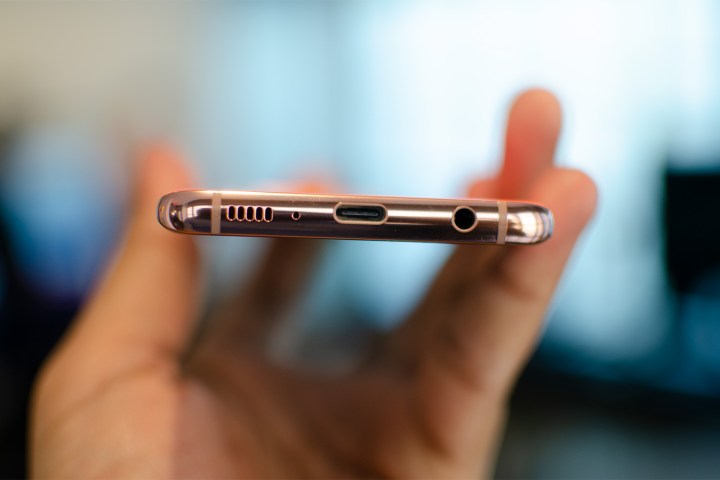
Every one of these new Samsung phones has a Qualcomm Snapdragon 855 processor inside. It offers a significant speed bump over last year’s 845, but also brings faster connectivity, improved graphics, smarter A.I. support, camera performance improvements, and better support for in-display fingerprint sensors. It will also offer support for 5G, the next generation of mobile network connectivity, though the Galaxy S10 5G is the only one of these phones that will take advantage of that particular feature.
Most people will find the 6GB of RAM in the base model of the S10e is plenty, but the S10 and S10 Plus ramp that up to 8GB, and if you opt for the version of the S10 Plus with 1TB of storage, you’ll get a whopping 12GB of RAM. Suffice it to say that multitaskers will have no problems skipping in and out of countless open apps and games. The base level of storage is also ample at 128GB, but you can also get a 256GB S10e, and both the S10 and S10 Plus come in 512GB varieties. All except the S10 5G support MicroSD cards for further expansion.
The S10e has the smallest battery at 3,100mAh, but it also has the smallest screen. The S10 gets a 3,400mAh battery, the S10 Plus gets 4,100mAh, and the S10 5G — which has the largest screen and the extra power demands of 5G to deal with — gets the biggest battery rated at 4,500mAh. Samsung has stuck with Qualcomm’s Quick Charge 2.0 standard, which tops out at 18W, in the S10, S10 Plus, and S10e, but the S10 5G will be able to charge faster, up to 25W.
All of them support Qi wireless charging at faster speeds than before, provided you have a fast wireless charging pad, and Wireless PowerShare, which means you can use your Galaxy phone to charge up any other Qi-certified device. You can even plug your Galaxy S10, S10 Plus, S10e, or S10 5G in to charge and wirelessly charge another device on it at the same time.
Winner: Samsung Galaxy S10 5G
Design and durability
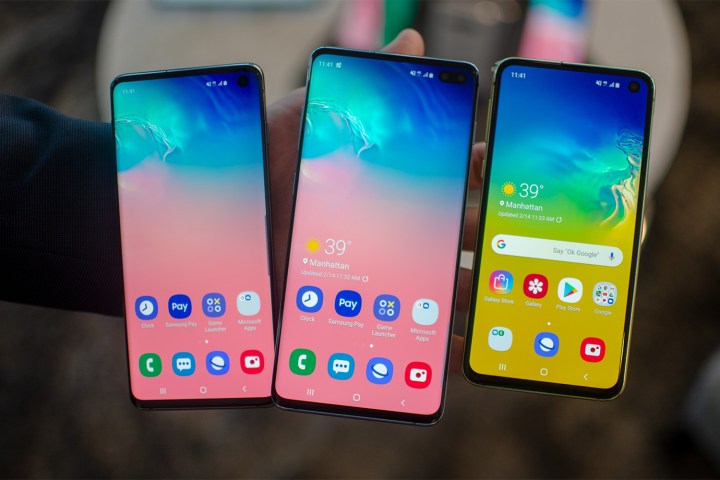
Samsung’s Galaxy S design language hasn’t changed much in the last few years, but the S10 range immediately stands out as different. The stunning new Dynamic AMOLED displays feature hole-punch cameras and squeeze those bezels down as far they’ll go, getting very close to a completely edge-to-edge screen. The S10, S10 Plus, and S10 5G displays retain those signature Samsung curves, while the S10e screen is flat. The S10 Plus and S10 5G have dual camera lenses to accommodate on the front, so the holes are a little larger.
The fingerprint sensor has been moved to the right side of the S10e, but in the other three Galaxy S phones, the physical sensor is gone, replaced by an ultrasonic in-display fingerprint scanner that’s secure enough to support Samsung Pay. Fans of wired headphones will be glad to know that they all the phones have a standard 3.5mm audio jack.
With curved glass backs, cases are going to be essential whichever one you choose. They all score IP68 ratings for water resistance, which means they can be submerged in up to 5 feet of water for up to 30 minutes without sustaining any damage.
While this one is a close one, the S10, S10 Plus, and S10 5G win out over the S10e for having a better screen-to-body ratio, and we like the design of the back of those phones more.
Winner: S10, S10 Plus, and S10 5G
Display

Samsung has been leading the field in display technology in phones for years, but just as everybody catches up, it steps ahead again with Dynamic AMOLED and Infinity-O Displays. These stunning screens feature incredible brightness levels, HDR10+ certification, and accurate colors, and emit reduced blue light. We’ve seen hole-punch cameras in LCD displays, but Samsung has figured out how to make it work with OLED.
By default, all of them have Full HD+ (2,280 × 1,080 pixels) resolution, but you can crank the S10, S10 Plus, and S10 5G up to WQHD+ (3,040 × 1,440 pixels). The S10 will be the sharpest in terms of pixels per inch, because it has the smallest display of those three, but we don’t think you’ll see much difference between them. There’s no standout winner here. Choosing between the S10 at 6.1 inches, the S10 Plus at 6.4 inches, and the S10 5G at 6.7 inches is going to be personal preference, but the S10e is a bit behind the other three.
Winner: S10, S10 Plus, S10 5G
Camera
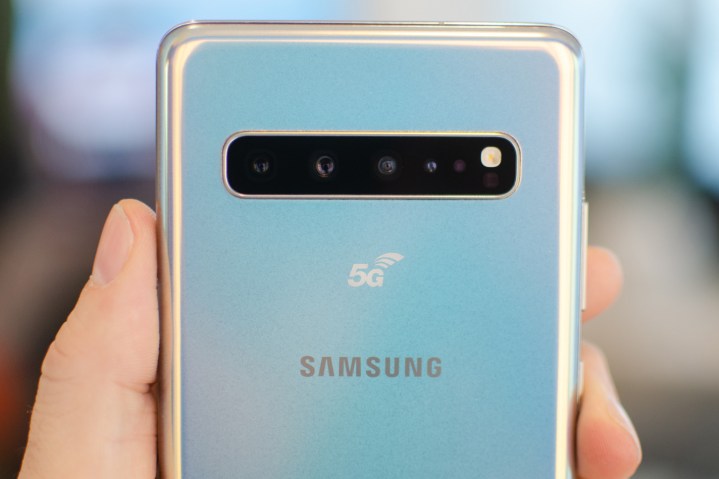
Samsung has done some serious work on the camera suite in the latest batch of Galaxy S phones, but there are some important differences here. The Galaxy S10 and S10 Plus both have a triple-lens main camera, while the Galaxy S10e makes do with a dual-lens setup. All three sport an ultra wide-angle 16-megapixel lens with a 123 degree field of view and an f/2.2 aperture, and a 12-megapixel standard lens with a variable aperture (f/1.5 to f/2.4). The S10 and S10 Plus also have a 12-megapixel telephoto lens with an f/2.4 aperture that allows for 2x optical zoom. The S10 5G has a fourth 3D depth camera on top of the same triple-lens suite as the regular S10 and S10 Plus. This special 3D camera supports Time of Flight technology and enables advanced augmented reality experiences through 5G.
Moving around front, the S10 and S10e have a single-lens camera rated at 10-megapixels with an f/1.9 aperture. The S10 Plus has a dual-lens selfie camera, pairing that 10-megapixel lens with a secondary 8-megapixel lens for capturing depth. Once again, the S10 5G adds a special 3D depth camera alongside the 10-megapixel lens found in the others.
Winner: Samsung Galaxy S10 5G
Software and updates
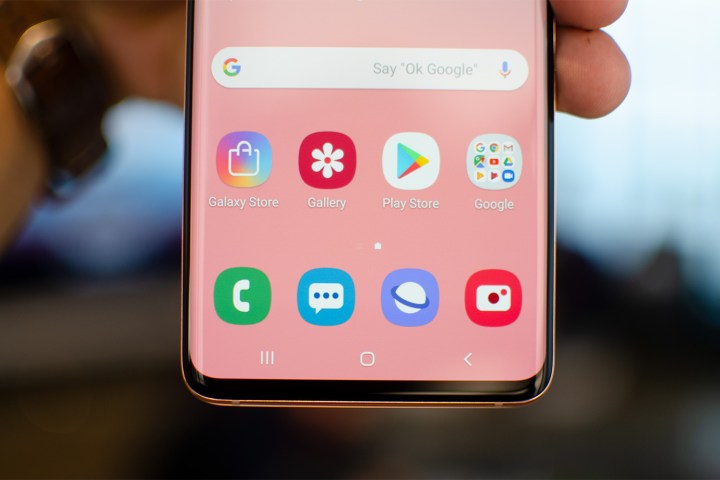
You’ll find Android 9.0 Pie running on these phones, with Samsung’s One UI over the top. Because of Samsung’s customized skin it can take a little longer for its phones to get Android updates, compared to stock Android devices, but as Samsung’s flagship range, we’d expect these four to get at least the next version or two of Android, as well as security updates on a pretty similar schedule.
Winner: Tie
Special features

The entire S10 line sports special Samsung features like Bixby, Samsung Pay, and Samsung DeX. They also all boast Wireless PowerShare functionality to charge up other devices wirelessly. The ultrasonic, in-display fingerprint sensor in the S10, S10 Plus, and S10 5G is absent from the S10e, but there aren’t too many other special features to set these phones apart. We’ve discussed the camera differences, but you may also point to the special augmented reality support in the S10 5G and, of course, the fact that it will eventually be able to take advantage of 5G speeds.
Winner: Samsung Galaxy S10 5G
Price and availability
Samsung is clearly matching Apple’s range on pricing, which means the new Galaxy S10 phones are expensive. The S10e is priced at $750, the S10 is $900, and the S10 Plus starts from $1,000. We don’t yet know the price of the S10 5G, but it will obviously be even higher. You can pre-order the S10, S10 Plus, and S10e now, and you’ll get free Galaxy Buds if you do so before the March 8 release date.
All of them will be available unlocked from a wide range of retailers and will work on all major U.S. carriers. You’ll also find them in all major carrier stores. The S10 5G will be a Verizon exclusive for a limited time when it launches some time in the first half of 2019. It will be made available everywhere else soon after.
Overall winner: Samsung Galaxy S10 5G
The Samsung Galaxy S10 5G has to be our overall winner, but that doesn’t mean it’s the best choice for everyone. It’s relatively big, it’s not coming out for a while, and we expect it to be very expensive. The advantages it affords, beyond the 5G support, are the slightly bigger screen and battery, faster charging, and the special 3D depth-sensing cameras. The slight differences between the rest of the range mean it all comes down to the size and budget that suits you best.

